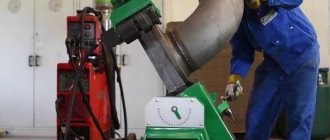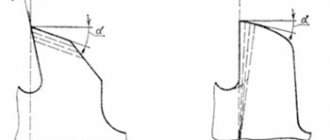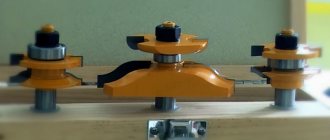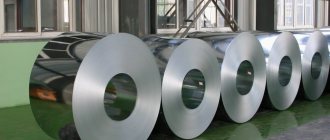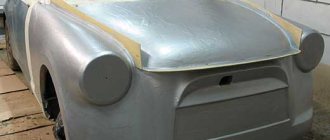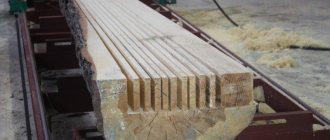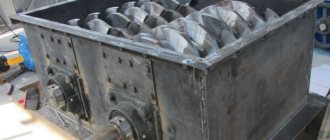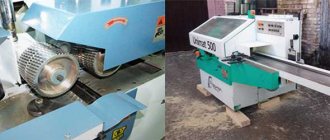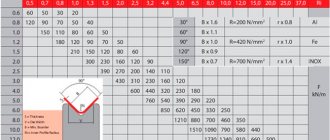Laser welding is a versatile process capable of welding carbon, low-alloy, high-strength, stainless steels, aluminum and titanium alloys, plastics, and a variety of dissimilar materials. Welding is usually carried out in a protective gas environment: argon (Ar), helium (He) and sometimes nitrogen (N2), or various mixtures of gases.
The most important difference between laser welding and traditional technologies is that the quality of welded joints made by laser welding is high and similar in its physical and mechanical properties to the properties of the base material. Laser welding is easily integrated into production lines and can be fully automated.
Typically, laser welding is carried out without cutting edges in one pass.
Important! Laser welding has a great positive feature - during it, a welded joint with high density is formed. But porosity and other defects that are inherent in other welding methods are absent when using this technology.
To a greater extent, with traditional methods, aluminum and its alloys are susceptible to porosity.
It is known that pores in the weld lead to a decrease in the thickness of the weld section, which affects the elasticity and strength of the finished product. Uniformly distributed porosity during arc welding is allowed no more than 20%. When using laser welding technology, the porosity is less than 0.8%.
Due to the fact that laser welding is based on other physical principles (no electrodes, arc, etc.), the problem of pores in the weld does not arise as such.
Currently, there are two main types of laser welding: automatic and manual. If the first is used at large engineering enterprises (shipbuilding, etc.) and has a higher cost, then the second option is more affordable and can be applied to medium and small metalworking enterprises.
The manual welding machine consists of the following components:
- laser generator (source);
- welding head unit equipped with a focusing lens;
- software control unit for the device;
- power supply unit;
- cooling device (chiller);
- filler wire feeder.
Let's look at the most important components.
Areas of application of laser welding
- Welding in hard-to-reach places (electric vacuum technology, electronics, watchmaking, mechanics, medicine)
- welding of easily deformable materials (thin plates, wires, films, etc.)
- under conditions of intense heat removal (well-conducting materials, etc.)
Laser welding machines are designed to join metals (including dissimilar ones) using radiation. This method of processing materials is used to preserve the original shape and dimensions of the part being welded. The metal is practically not deformed in the process and retains its properties (strength, structure, resistance to deformation, etc.).
Laser welding machines DVS
The DVS handheld laser welding machine can weld metal sheets up to 3 mm. Laser welding of metal has a small area of thermal impact on the material, low deformation, large welding depth, and high strength of the weld.
This solves the problem that traditional argon arc welding technology involves a large amount of hot melting, significant metal deformation and a large amount of work during subsequent processing. To master this laser welding machine, just a few minutes of training is enough to produce welding at the level of a professional welder. Mobile and flexible welding equipment is a modern welding process that can be used to perform spot welding, butt welding...
Welding machine design
Laser source
The equipment uses a fiber laser source with a power of up to 2000 W, which does not require special maintenance. 50,000 hour source life (optional up to 100,000 hours when using an IPG source).
Laser head
An ergonomic hand gun weighing no more than 1800 grams with a welding wire feeding function and a flexible fiber optic cable provide maximum ease of use.
Chiller
As standard, the handheld laser device is equipped with a built-in automatic cooling system.
| Model | DVS-LW1000 | DVS-LW1500 |
| Laser power | 1000W | 1500W |
| Voltage | 220V/50Hz | 380V/50Hz |
| Power consumption | 6600 kW | 8800 kW |
| Thickness of welded sheets | ||
| Stainless steel | 0.5-3mm | 0.5-4 mm |
| Carbon steel | 0.5-3mm | 0.5-3 mm |
| Aluminum | 0.5-3mm | 0.5-4 mm |
| Length of welding cable (waveguide) | 10m (15m on order) | 10m (15m on order) |
| Mode | Continuous/modulation | Continuous/modulation |
| Carrier wavelength | 1080nm | 1080nm |
| Maximum modulation frequency | 5kHz | 5kHz |
| Power adjustment range | 10-100% | 10-100% |
| Maximum clearance between parts | ≤1mm | ≤1mm |
| Cooling | Water (antifreeze) | Water (antifreeze) |
| Temperature | 0~35 ℃ | 0~35 ℃ |
| Humidity | < 70% | < 70% |
| Weight | 225 kg | 250 kg |
Application of Laser Welding
Spot Welding
Butt joint
Gusset
Features of Handheld Laser Welding Machine:
- Manual welding is flexible in use and is not limited to just fixtures;
- The ease of use of the device allows ordinary workers to weld at the level of professional welders without the involvement of professional welders;
- There are continuous or pulsed welding modes;
- Laser welding of metal has a small area of thermal impact on the material, small deformation, large welding depth, high strength of the weld;
- When using continuous welding, the weld has good uniformity and continuity, no flash, and beautiful appearance;
- A smooth weld reduces the amount of post-processing required for grinding and polishing;
- Mobility of the device.
Materials to be welded
Stainless steels
Carbon steels
Aluminum alloys
Copper and alloys
Comparison of Traditional Welding and Laser Welding
| Comparable parameters | Traditional welding | Laser welding |
| Personnel requirements | +++ | + |
| Materials to be welded | SS,CS | SS,CS,AL,CU |
| Thermal impact | +++ | + |
| Deformation | +++ | + |
| Consumables | ++ | + |
| Seam strength | +++ | +++ |
| Welding speed | + | +++ |
| Environmental Impact | ++ | + |
| Post-processing (seam cleaning, chemical etching) | +++ | + |
| Seam width adjustment | — | + |
The result of laser welding DVS-Laser
Machine characteristics
Power is the main characteristic of a welding machine. Modern devices can operate in the modes of microspot welding, soldering, manual welding and as part of an automated complex for assembling devices. There are 3 types of laser emitters in devices:
- Solid state. The active medium in them is a rod made of ruby or yttrium aluminum garnet. The crystal is in the lighting chamber. A pump lamp is used to excite it.
- Gas. They are distinguished by increased power and large dimensions. The installation requires a water cooling system.
- Fiber. They differ from solid-state ones in the type of resonator and high power.
Almost all laser welding machines require water cooling.
Welding head block
Our company supplies welding head blocks or welding heads in two versions.
A) Welding head with one motor for one focusing lens unit.
It allows for high-quality welding with a spot diameter of up to 5 mm, which makes it possible to butt weld parts of large thickness with a sufficiently wide tolerance for the quality of the edges of the workpieces. Welding can be carried out either with or without beam oscillation.
The welding head is lightweight: 0.8 kg.
Also, this type of head is recommended for use in conjunction with a filler wire feed system.
B) Welding head with two motors for two focusing lens units.
It allows for high-quality welding of thin materials 0.5-1 mm without burning through. To form a quality seam, hourglass-shaped oscillation can be used, which is not achievable with a head with a single motor for the focusing lens.
But such a head also has negative sides: its weight is more than 2 kg.
Advantages
A laser welding machine can make butt and overlap joints. In the first case, the operator does not need to use flux or any additives. The joint should not exceed 0.2 mm. The metal melts to its entire thickness. With the overlap method, sheets are placed on top of each other and locally welded. Advantages of laser welding machines:
- Small heating area. This significantly reduces metal deformation during operation.
- Working with hard-to-reach places. A laser for metal welding allows you to solder even bent parts of a part.
- High quality seams. The equipment performs all actions according to the working algorithm. When manual welding, the quality of joints is influenced by the professionalism of the worker and working conditions.
- Simple control. The process is monitored by an operator. He will be able to stop welding at any time, reduce or increase the power of the device.
In you can buy a laser welding machine of medium or high power. We provide a warranty on equipment and also provide post-warranty service. Our company's engineers will help you choose an installation based on your budget and requests. Delivery of orders is possible to any region of Russia.
Laser source
Currently, many source manufacturers produce radiation generators that can be used in welding, but nevertheless, not all of them are good.
Our company offers installations with sources from three manufacturers:
- IPG
- JPT
- RECI
IPG
The most worthy sources, in terms of the quality of the output beam, its stability and the conversion coefficient of electrical energy into laser beam energy, are currently IPG sources . They allow you to weld even dissimilar materials, such as brass, copper and aluminum. Also, the sources from this manufacturer have double protection against back radiation, which guarantees stable operation when the reflected beam hits the fiber or even the diode assembly.
And finally, these are the sources of Russian production.
These sources can be used with virtually no restrictions on the material: copper, brass, titanium, aluminum and all types of steels.
JPT Sources
They have similar characteristics to IPG sources, but are somewhat inferior to them in terms of the efficiency of converting electrical energy into the energy of a laser beam. They are also equipped with full protection against back radiation. Ideal for welding aluminum and its alloys. But they have a more affordable price.
RECI Sources
They are the simplest in characteristics and are excellent for welding carbon steel, stainless steel and aluminum (in some cases).
These sources are not protected against back radiation. Installations, based on these sources, are recommended for enterprises engaged in the manufacture of metal structures and the production of stainless steel furniture.
All of the above sources are liquid cooled, which guarantees long and trouble-free operation.
We do not supply our welding systems with sources from other manufacturers, due to the large number of complaints about the quality of the laser beam and poor build quality.
Main types of devices
Depending on the type of light energy source, laser welding machines are divided into two types - solid-state and gas lasers.
A solid-state laser uses a rod of ruby, neodymium glass or yttrium aluminum garnet with neodymium (Nd:Yag) or ytterbium as the working fluid.
The rod is placed in a light chamber, and a flash pump lamp is used to excite it. As a result of operation, a solid-state laser can generate power of 1-6 kW. The energy of a solid-state generator is only sufficient for welding small parts, for example, for welding leads made of gold or tantalum, welding cathodes of picture tubes.
Welding with solid-state laser devices allows for precise dosage of energy, resulting in high-quality welding when processing small parts.
Gas-pumped lasers use a gas consisting of a mixture of carbon dioxide, nitrogen and helium as the emitting body. When such gas is pumped through the chamber using an electric discharge, gas atoms are excited and energy is generated. The power of gas lasers can exceed 20 kW. A beam of this power can weld metal up to 20 mm thick.
The most powerful are gas dynamic lasers . Such devices use gas heated to 1000-3000°C. Such a gas, moving into the resonator and cooling, emits quanta of light energy. The generator can be pumped using a low-power laser or other energy source. As a result, this type of laser can generate a beam with a power of 100 kW, which makes it possible to weld steel up to 35 mm thick at high speed.
Laser welding occurs under atmospheric conditions, which requires protecting the resulting seam from the influence of the external environment. Argon gas is most often used for this.
In addition, due to the high intensity of the beam, evaporation of the metal occurs and the formation of vapors. Such a medium scatters and screens the laser beam. To prevent the formation of plasma, high-power laser welding machines use a shielding gas, such as helium. Therefore, most often when laser welding, a gas consisting of half argon and helium is supplied.
A feature of high-power laser welding is that the beam gradually penetrates into the depth of the part, pushing the melt to the rear wall. Thanks to this, a thin seam with deep penetration is obtained.
The high concentration of energy allows you to weld parts at high speed and ensure high weld strength. At the same time, the thermal impact zone on the material is reduced, and its welding deformations are also reduced.
Laser welding equipment includes:
- laser beam generating device;
- beam focusing system;
- a means of moving the apparatus (or workpiece).
The welding installation can be stationary or mobile. A stationary installation is installed in production and is immovable. The mobile unit is moving. In practice, the mobile unit is also quite heavy and is most often equipped with wheels for movement.
Depending on the power, the devices can be used:
- For microwelding (penetration depth no more than 0.1 mm).
- For mini-welding (penetration depth from 0.1 mm to 1 mm).
- For macro welding (penetration depth over 1 mm).

